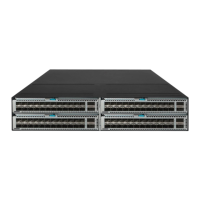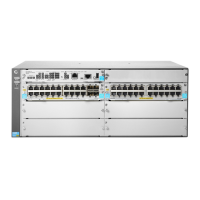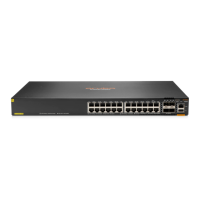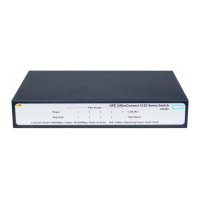416
# Establish an SCP connection to the SCP server at 192.168.0.1 based on the 128-bit Suite
B algorithms.
<SwitchA> scp 192.168.0.1 get src.cfg suite-b 128-bit pki-domain client256
server-pki
-domain server256
Username: client001
Press CTRL+C to abort.
Connecting to 192.168.0.1 port 22.
src.cfg 100% 4814 4.7KB/s 00:00
<SwitchA>
{ Based on the 192-bit Suite B algorithms:
# Specify server384 as the PKI domain of the server's certificate.
[SwitchB] ssh server pki-domain server384
# Create an SSH user client002. Specify the publickey authentication method for the user
and specify client384 as the PKI domain for verifying the client's certificate.
[Switch] ssh user client002 service-type scp authentication-type publickey assign
pki-domain client384
# Establish an SCP connection to the SCP server at 192.168.0.1 based on the 192-bit Suite
B algorithms.
<SwitchA> scp 192.168.0.1 get src.cfg suite-b 192-bit pki-domain client384
server-pki
-domain server384
Username: client002
Press CTRL+C to abort.
Connecting to 192.168.0.1 port 22.
src.cfg 100% 4814 4.7KB/s 00:00
<SwitchA>
NETCONF over SSH configuration example with
password authentication
Unless otherwise noted, the device in the configuration example operates in non-FIPS mode.
When the device acts as a NETCONF-over-SSH server operating in FIPS mode, only ECDSA and
RSA key pairs are supported. Do not generate a DSA key pair on the NETCONF-over-SSH server.
Network requirements
As shown in Figure 117:
• The switch uses local password authentication.
• The client's username and password are saved on the switch.
Establish a NETCONF-over-SSH connection between the host and the switch, so that you can log in
to the switch to perform NETCONF operations.

